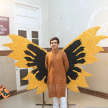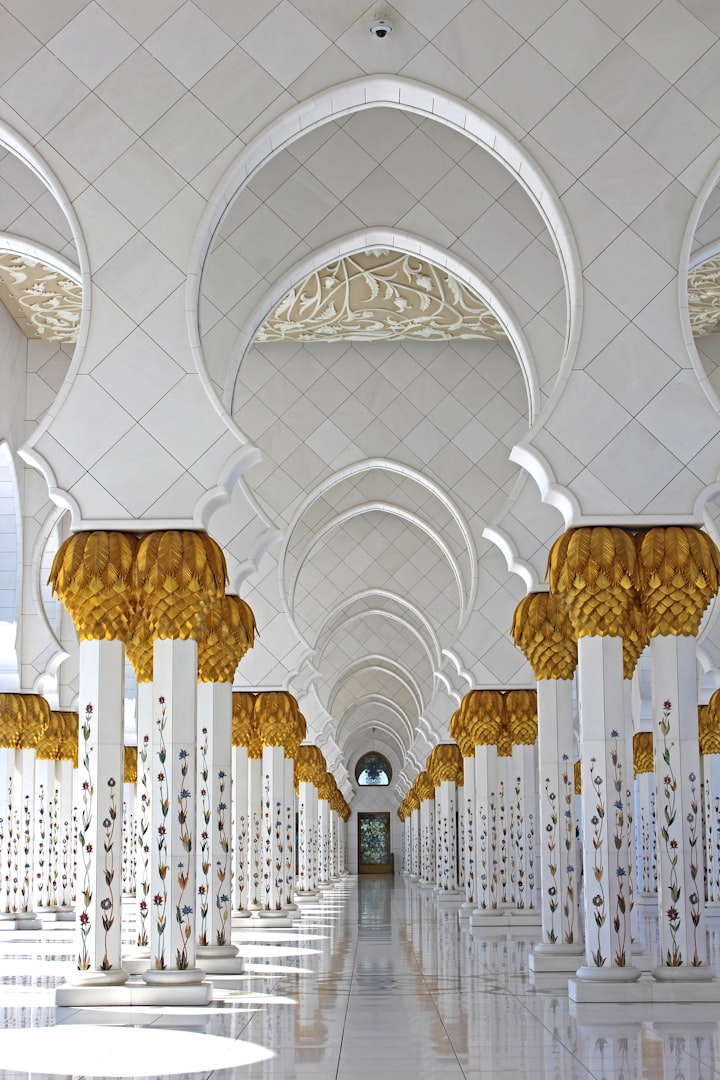What is Buried Under the Mysterious Pyramids of Mexico—Dead or Gold?
mystery of pyramids in Mexico

If you look at some distance, the pyramids of Mexico seem made of gray volcanic stone, and the walls around them look charming.
Located in the Cañada de la Virgen Valley, 30 miles from the city of San Miguel de Allende in central Mexico, these rock formations have blended into the arid region like a mountain range, appearing to be a natural part of it. But the largest of these pyramids, no doubt that they had been built by human hands. Staircases carved into the hard rock would not have been possible without the help of a skilled architect.
The other two relatively small pyramids also showed signs of a human hand. These were signs of an ancient civilization. The locals have been aware of the presence of these ruins outside their city for a long time. Some spread rumors that the dead are buried, and some talked about gold buried under these mysterious pyramids of Mexico. The grave robbers even tried to blow them up with explosives, but there is no evidence of whether they found anything or not.
This site remained unknown to the rest of the world until early 2000 when Mexican archaeologists excavated it. In 2011, local archaeologist Albert Coffey started visiting the site of this mysterious pyramid.
They say, it is the 'House of 13 Heavens', which was built by the local residents in 540 AD.
Pointing to the tallest pyramid, he said, “This stone was extracted from a nearby quarry.” The pyramid had a square base and steps leading to a platform at a height of 15 meters.
According to him, two small pyramids, one called the 'House of Wind' and the other 'House of the Longest Night, were also built from the same stones.
However, even after two decades, the mystery of who made them has not been solved. “It is still a mysterious place which continues to amaze us,” says Coffey. We keep getting new information.
So far, it has been established that this pyramid, called the House of 13 Heavens, was a temple dedicated to telling the time about any important function in ancient times. Centuries ago, keeping track of time and weather was not an easy task. At that time, there were no clocks or calendars, so people used to guess by looking at the sky.
Director of the Museum of Pre-Hispanic Astronomy in San Miguel de Allende worked with the Mexican National Institute of Anthropology and historian Gabriela Zapida during the excavation of these pyramids. She says, “Today we see the time with the help of a watch and an iPhone, but at that time, people had to take the help of the sun and the moon.”
She went on to say that these pyramids were built by an ancient civilization to help them estimate critical dates for farming by watching the movement of the sun.
These pyramids have been here for 1500 years, but their own story is now lost to the cycle of time, as they left behind no writings that could indicate who were the builders of these mysterious pyramids. One of the reasons for this is the devastation during the Spanish occupation of Mexico in the 16th century.
However, it is beneficial for local culture to preserve the knowledge and traditions of their ancestors. Since, their history has either been forgotten or misunderstood, which is why Rosana Queiroz and Gabriela Zapida have been trying to collect as many facts as possible about this ancient civilization.
Despite the numerous artifacts discovered from this place, they remain unable to solve the puzzle of Mexico's pyramids' history. Every answer raises new questions. These ancient accountants belonged to a civilization that was well versed in astronomy and architecture. “Many ancient civilizations worshiped specific gods, but these people worshiped the creation of time and space,” Queiroz says.

In building these pyramids, these people tried to imitate the principles used in the creation of the world. “According to local history, holy beings created the world, time, and space and handed over the sun to humans to tell the time,” Queiroz said.
So humans made a similar organization on earth. First, the four corners of the world were made, and the sun used to go around these four corners for a whole year. In this place of worship, you see what happened when creating the universe in the opinion of this ancient civilization.

The four corners of the House of 13 Heavens represent the winter and summer solstice, two agriculturally important dates, the fourth of March and the ninth of October—when crops were planted and harvested. If you stand on the front steps of the pyramid on any of these four days, the sun will appear to stand in a particular corner. Researchers reflect that people used standard techniques and materials while building these pyramids. They took volcanic ash stones from a nearby quarry and arranged them so that each stone supported the other. This method is called 'Haiso'.
Today, these pyramids may not look good, but their builders spared no effort to ensure their beauty from miles around. The stairs were decorated with the help of imported limestone. It will take two to three days to bring these stones. Natural glue extracted from the leaves of a local cactus tree is used to bond these decorative limestone stones. This centuries-old method is still used by local people.
On further investigation of these pyramids, experts came to know that valuable items were present here, but it was not gold. They found 19 skeletons buried under pyramids, including men and women, a child, and a dog. Experts previously thought that the builders of these pyramids were the Otomi people, whose descendants still live here, but do not able to conduct a DNA analysis to confirm this hypothesis. You have to get permission from the local population. Then there are the various Otomi people. So it is not that easy.
However, experts must have known some clues from the structure found at the highest point of the House of 13 Heavens. The bones of this structure resemble a human, hunter, or warrior. But DNA analysis revealed that this structure belonged to a woman. More surprisingly, the skeleton structure was much older than the building itself. This temple was built in 540 AD, but the structure dates back to 400 BC.
These people carried it with them; wherever they went for at least 950 years. This means that it was an important person. So when they built the temple, they buried it in the highest place. Still, its identity is mysterious no one knows who she was and why she was so special.
Climbing the stairs is not easy as there is nothing to hold on to. Genome analysis of the structures revealed similarities to the ancient Mexican peoples of the Maya. So maybe this is a place; where people from all over Mexico come together.
Archaeologists hope to uncover more secrets that will help them solve the puzzle. Much of this society's history has been lost to time, the very time their forefathers were adept at keeping track. How will we remember such knowledge and wisdom if we do not tell their story again?
About the Creator
Munawar Hussain
writer at medium and vocal. I have my own blog as well.






Comments
There are no comments for this story
Be the first to respond and start the conversation.